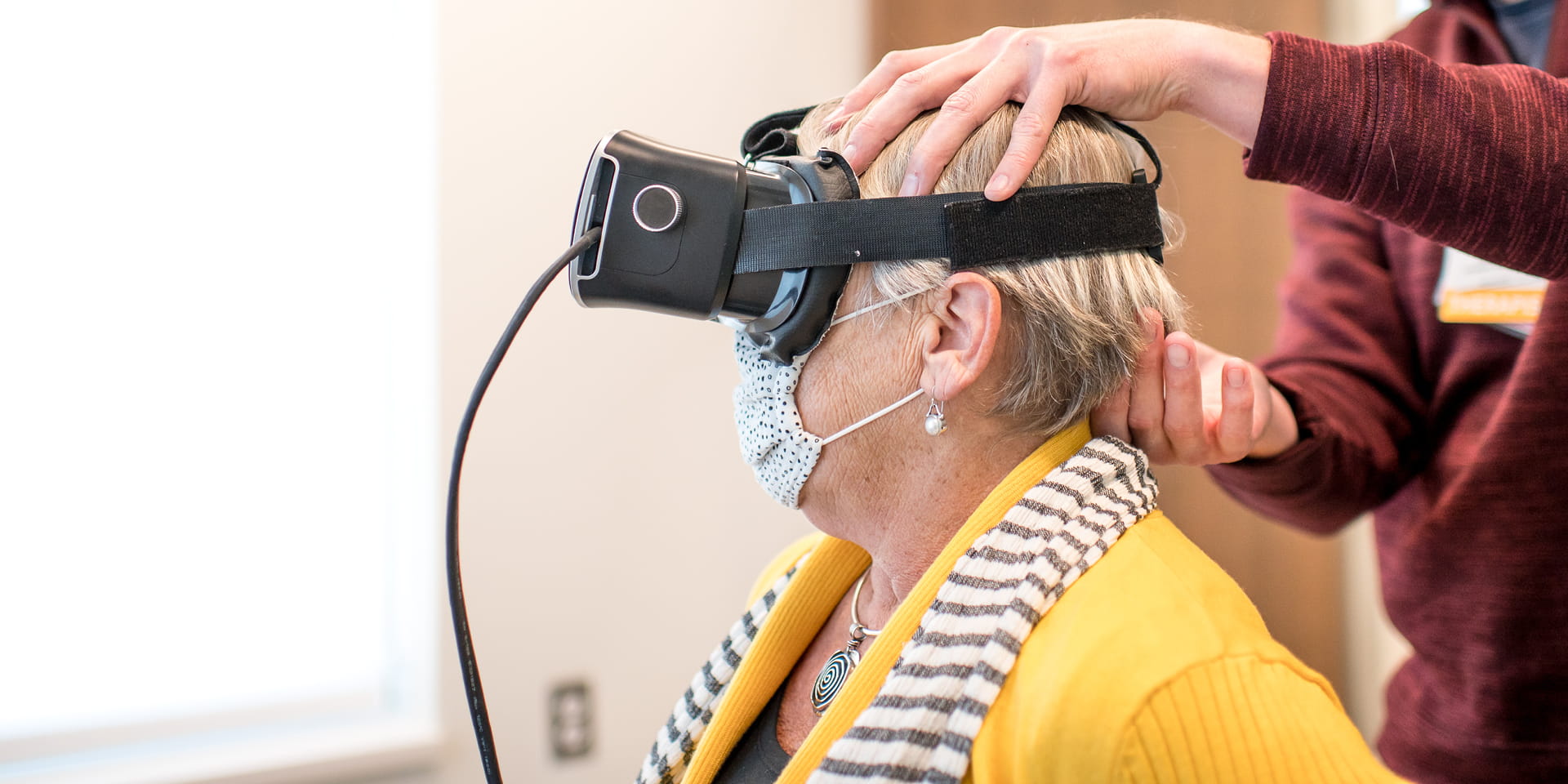If you’ve ever spent time on a spinning tea cup ride, you know what vertigo feels like — except vertigo is not at all fun and can even be scary. Vertigo is the perception of yourself or the world spinning around you. It is a disorder of the vestibular system, which is our body’s balance center that involves the inner ear, eye movements and the brain.
Is it Dizziness?
While people who’ve experienced vertigo often describe it as dizziness due to the unsteady sensation it causes, it differs from dizziness because vertigo involves the feeling of movement. Many people with vertigo say it feels as if the room is spinning.
Dizziness, on the other hand, is typically associated with lightheadedness, floating, rocking or the feeling of being pulled in a single direction, according to information from the Vestibular Disorders Association.
One of the most common forms of vertigo is benign paroxysmal positional vertigo (BPPV), which occurs in about 9% of older adults — women are more commonly affected, according to information from the American Physical Therapy Association.
To further explain: The inner ear holds otoconia, also referred to as crystals. BPPV occurs when these crystals move out of place, which can be the result of aging, trauma to the head, infection or Meniere’s disease. But most of the time, unfortunately, the cause is unknown.
BPPV is generally not a chronic condition and can often be effectively treated with physical therapy.
Why it Happens
Within the ear, there are three different canals, and those canals typically hold only fluid, elaborates Sean Powers, PT, DPT, lead vestibular therapist at Doylestown Health’s Clark Outpatient Rehabilitation Center. But, when the crystals move into one of the three canals — where they should not be — it causes vertigo.
“Once those crystals are floating around in the canal, it gives the nerve the wrong feedback to the brain. Then the brain triggers an event called nystagmus, which is rapid eye movement,” he explains.
Wherever the crystals are, it causes the eyes to move in a very particular pattern. In other words, in each of the canals where crystals land, specific eye movement patterns correspond.
How it’s Treated
To help identify the canal, Sean and other PTs perform a test involving the patient wearing infrared video goggles linked to a computer.
“Most people can’t tell their eyes are moving. We give patients the goggles, lay them down in a certain position… We’re actually watching eye movements on our computer screen in a magnified way and then we see if their eyes start jumping around… Depending on how the eyes move, that tells us exactly where the crystals are so we can create a treatment plan to move the crystals back to the right spot,” he explains.
Then, the therapists work with the patient to get vertigo under control with a series of maneuvers and exercises. The crystal will be “cleared” from the canal (or moved back in place) typically within the first or second visit. A third visit is usually scheduled to make sure nothing else is lingering, according to Sean.
Get Help
“One of the most gratifying things is seeing how quickly we get patients back to normal,” he adds. In order to receive physical therapy at Doylestown Health’s Clark Outpatient Rehabilitation Center, patients need a doctor’s prescription.
What’s important to note is that the severity of vertigo can vary. It can be mild and short lived for some, but others can suffer with it for months or even years, not realizing they have it. Part of the reason is that vertigo is often confused with symptoms of low blood pressure.
It can also mimic a very serious condition like stroke. A way to tell the difference between the two: If you sit up or lay down and feel spinning, but it doesn’t last for more than a minute or so, you likely have vertigo, according to Sean.
But, if the spinning is lasting more than a few minutes and doesn’t come and go as the result of movement, emergency room treatment is necessary to make sure it’s not a stroke, Sean adds. With stroke, the quicker a person gets to the hospital and receives treatment, the better the outcome.
“If it’s not a stroke, it could still be vertigo or vestibular neuritis — an attack on the nerve of the inner ear which causes symptoms no matter what position you are in and is not life-threatening,” he explains. “Getting checked out by a professional is the only way to know for sure.”
About Doylestown Health and Doylestown Hospital
Doylestown Health is a comprehensive healthcare system of inpatient, outpatient and wellness education services connected to meet the health needs of all members of the local and regional community. Doylestown Hospital, the flagship to Doylestown Health, has 247 beds and a Medical Staff of more than 435 physicians in over 50 specialties. An independent nonprofit health system, Doylestown Health is dedicated to providing innovative, patient-centered care for all ages.


